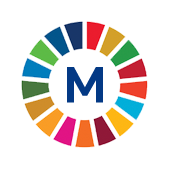 10.6.1 (16.8.1) Proportion of members in international organizationsMetadataPeriod: AnnualYear: 2025 |
 10.6.1 (16.8.1) Proportion of members in international organizationsMetadataPeriod: AnnualYear: 2025 |
| METADATA |
| Indicator information |
| Definition and methodology |
| Data source type and data collection method |
| Notes |
| ID of global indicator |
| Metadata update |
| Global metadata |
| Indicator information | Top |
| Indicator | |
10.6.1 (16.8.1) Proportion of members in international organizations | |
| Global indicator name | |
16.8.1 (10.6.1) Proportion of members and voting rights of developing countries in international organizations | |
| Target | |
16.8 Broaden and strengthen the participation of developing countries in the institutions of global governance | |
| Goal | |
Goal 16. Promote peaceful and inclusive societies for sustainable development, provide access to justice for all and build effective, accountable and inclusive institutions at all levels | |
| Definition and methodology | Top |
| Definition | |
The indicator Proportion of members and voting rights of developing countries in international organizations has two separate components: the developing country proportion of voting rights and the developing country proportion of membership in international organizations. In some institutions, these two components are identical. The indicator is calculated independently for five different international institutions: The United Nations General Assembly (UNGA), the United Nations Economic and Social Council (ECOSOC), the International Monetary Fund (IMF), the International Bank for Reconstruction and Development (IBRD) and the International Finance Corporation (IFC). The computation uses each institutions’ own published membership and voting rights data from their respective annual reports. The ratio of voting rights is computed as the number of voting rights divided by the total number of voting rights. The ratio of membership is calculated by taking the number of country members divided by the total number of members. Both ratios are expressed as percentages. | |
| Methodological explanations | |
Annual reports, as presented on the website of the institution in question, are used as sources of data. Sources of information by institution: | |
| Method of calculation | |
The ratio of voting rights is computed as the number of voting rights divided by the total number of voting rights. The ratio of membership is calculated by taking the number of country members divided by the total number of members. Both ratios are expressed as percentages. | |
| Unit of measure | |
% | |
| Available disaggregation | |
International organization | |
| Territorial level | |
Republic of Serbia | |
| Data source type and data collection method | Top |
| Data source | |
United Nations | |
| Periodicity of data collection | |
Annual | |
| Notes | Top |
Data for this indicator are taken from the UN SDG global database https://unstats.un.org/sdgs/dataportal
| |
| ID of global indicator | Top |
C200205 | |
| Metadata update | Top |
| 12/6/2025 | |
| Global metadata | Top |
https://unstats.un.org/sdgs/metadata/files/Metadata-16-08-01.pdf | |